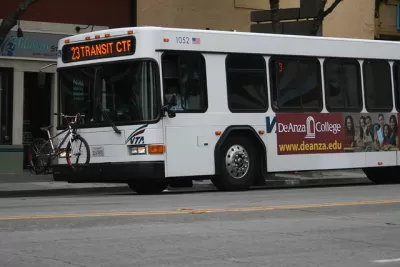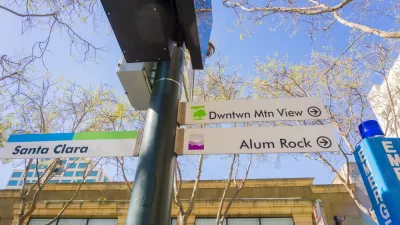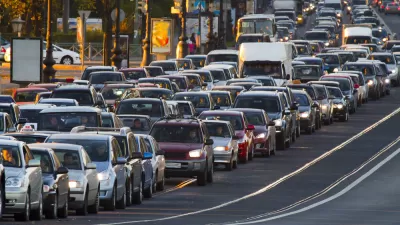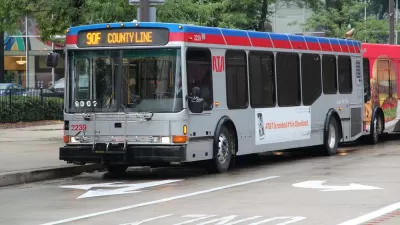A Silicon Valley columnist debates the tough political questions inherent to the process of redesigning local bus service.

Scott Herhold writes a column about the inevitable trade-offs and sacrifices that occur when transit agencies update their bus transit service to a high frequency grid. In this case, Herhold is writing about the process underway at the Santa Clara Valley Transportation Authority in and around San Jose, California.
Herhold has experience relying on one of the lightly used bus routes currently up for debate in the process to redesign the VTA bus system. A familiar name to Planetizen readers, Jarrett Walker, "has suggested a menu of possible changes that would increase service on popular routes and decrease buses on lightly traveled routes."
Despite his reliance on a mostly empty bus route, Herhold makes it clear that he supports the Walker's concept. "The right answer is absolutely clear: To bolster ridership and fare box return, you have to increase the frequency on popular routes and cut service on unpopular routes," writes Herhold.
One of Herhold's primary argument is that the VTA bus system is in crisis, with declining ridership and a faltering business model. The high frequency grid, according to Herhold, offers a chance to make the most of the opportunities borne from crisis, despite the rock and hard place the VTA system finds itself in.
FULL STORY: Herhold: VTA is stuck in a tough situation

Depopulation Patterns Get Weird
A recent ranking of “declining” cities heavily features some of the most expensive cities in the country — including New York City and a half-dozen in the San Francisco Bay Area.

California Exodus: Population Drops Below 39 Million
Never mind the 40 million that demographers predicted the Golden State would reach by 2018. The state's population dipped below 39 million to 38.965 million last July, according to Census data released in March, the lowest since 2015.

Chicago to Turn High-Rise Offices into Housing
Four commercial buildings in the Chicago Loop have been approved for redevelopment into housing in a bid to revitalize the city’s downtown post-pandemic.

Google Maps Introduces New Transit, EV Features
It will now be easier to find electric car charging stations and transit options.

Ohio Lawmakers Propose Incentivizing Housing Production
A proposed bill would take a carrot approach to stimulating housing production through a grant program that would reward cities that implement pro-housing policies.

Chicago Awarded $2M Reconnecting Communities Grant
Community advocates say the city’s plan may not do enough to reverse the negative impacts of a major expressway.
City of Costa Mesa
Licking County
Barrett Planning Group LLC
HUD's Office of Policy Development and Research
Mpact Transit + Community
HUD's Office of Policy Development and Research
City of Universal City TX
ULI Northwest Arkansas
Town of Zionsville
Urban Design for Planners 1: Software Tools
This six-course series explores essential urban design concepts using open source software and equips planners with the tools they need to participate fully in the urban design process.
Planning for Universal Design
Learn the tools for implementing Universal Design in planning regulations.


























